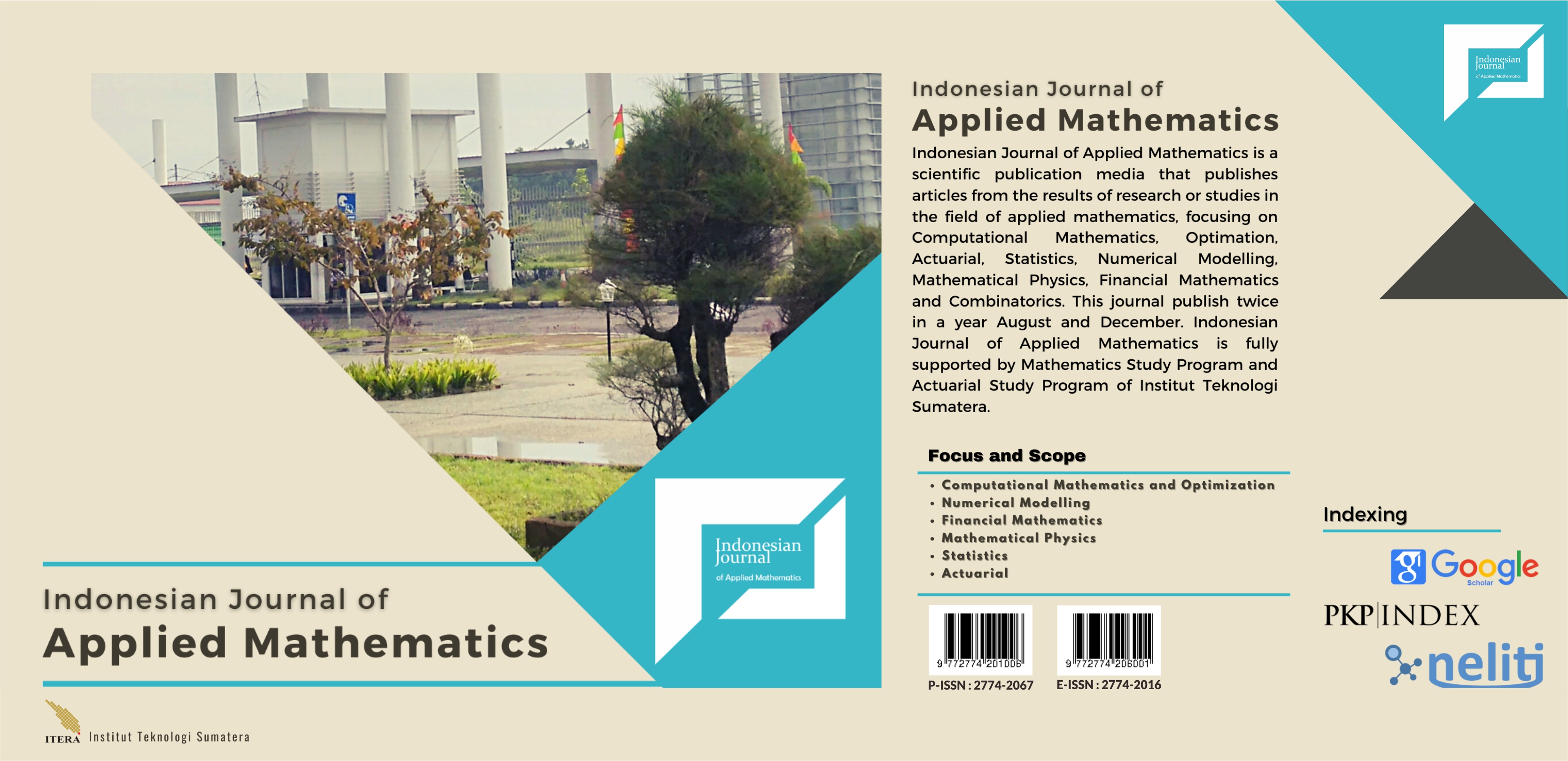Extended Kalman Filter with Optimal Control On Dengue Model
Abstract
In real life, due to various measurement limitations, not all variables in the dengue fever epidemic model can be measured. Therefore, a tool is needed to estimate unmeasured variables with known related variables. One method for estimating variables in nonlinear systems is the extended Kalman filter (EKF). Next, using these estimated results, optimal control will be sought in the form of vaccination to reduce the number of infections. From the simulation results, it can be concluded that state estimation with EKF for the dengue fever model is good enough to estimate each variable with measurements that are disturbed by a random variable within the selected range of disturbance covariance. Then, it was found that the smaller the standard deviation of the disturbance, the smaller the optimal control required at the start. Thus, the greater the disruption, the greater the costs spent.
Downloads
References
[2] M. Derouich, A. Boutayeb, and E. H. Twizell, A Model of Dengue Fever. BioMedical Engineering Online, 2003.
[3] S. Murrel, S. C. Wu, and M. Butler, “Review of Dengue Virus and The Development of a Vaccine,” Biotechnol Adv, vol. 29, no. 2, p. 239, 2011.
[4] D. C. P. P. P. Ch, “Tropical Disease Lacking Adequate Control Measures: Dengue, Leishmaniasis, and African Tripanosomiasis.” pp. 452–466.
[5] S. Lenhart and J. T. Workman, Optimal Control Applied to Biological Models. Chapman & Hall/CRC Taylor and Francis Group, 2007.
[6] F. L. Lewis, D. L. Vrabie, and V. L. Syrmos, Optimal control, Third. New York: John Wiley & Sons, 2012.
[7] K. D. Hammet, Control of Nonlinear Systems via State Feedback State- Dependent Riccati Equation Techiniques. Disertasi. Air Univerisity, 1997.
[8] E. A. dan R. Newton and P., “A Model of The Transmission of Dengue Fever with An Evaluation of The Impact of Ultra-low volume(ULV) Insecticide Application on Dengue Epidemics,” Am J Trop Med Hyg, vol. 47;709-720, 1992.
[9] P. Cattand and dkk, “Disease Control Priorities in Developing Countries.” 2006.
[10] M. J. dan R. Keeling and P., Modeling Infectious Disease in Human and Animals. Princeton. Princeton University Press, 2008.
[11] H. S. Rodrigues, M. T. T. Monteiro, and D. F. M. Torres, “Vaccination Models and Optimal Control Strategies to Dengue,” Mathematical Biosciences, vol. 247, pp. 1–12, 2013.
Copyright (c) 2024 Indonesian Journal of Applied Mathematics

This work is licensed under a Creative Commons Attribution-NonCommercial 4.0 International License.





